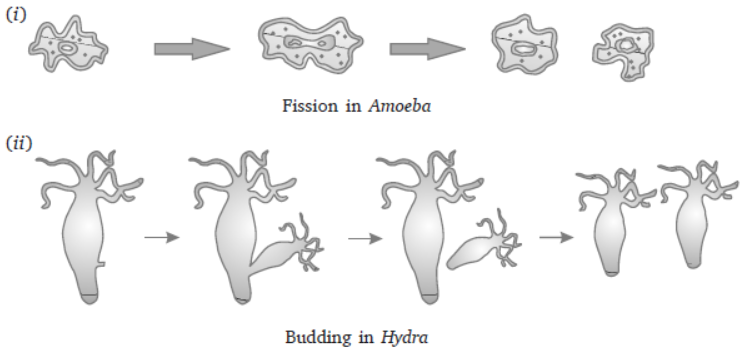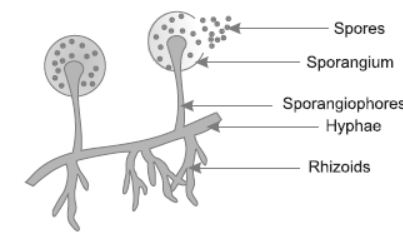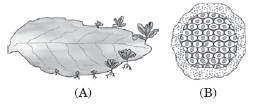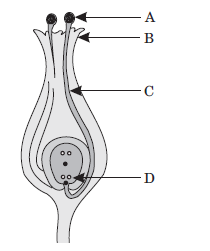Read and download free pdf of CBSE Class 10 Biology How Do Organisms Reproduce Worksheet Set H. Students and teachers of Class 10 Science can get free printable Worksheets for Class 10 Science Chapter 7 How do Organisms Reproduce in PDF format prepared as per the latest syllabus and examination pattern in your schools. Class 10 students should practice questions and answers given here for Science in Class 10 which will help them to improve your knowledge of all important chapters and its topics. Students should also download free pdf of Class 10 Science Worksheets prepared by teachers as per the latest Science books and syllabus issued this academic year and solve important problems with solutions on daily basis to get more score in school exams and tests
Worksheet for Class 10 Science Chapter 7 How do Organisms Reproduce
Class 10 Science students should download to the following Chapter 7 How do Organisms Reproduce Class 10 worksheet in PDF. This test paper with questions and answers for Class 10 will be very useful for exams and help you to score good marks
Class 10 Science Worksheet for Chapter 7 How do Organisms Reproduce
VERY SHORT ANSWER TYPE QUESTIONS
Question: How does the developing embryo get nourishment inside the mother’s body?
Answer: The embryo gets nourishment from the mother’s blood with the help of a special tissue called placenta.
Question: When does copying of DNA occur?
Answer: Copying of DNA occurs during cell division.
Question: What are the functions performed by the testis in human beings?
Answer:The testes are the male reproductive organs that are located outside the abdominal cavity within a pouch called scrotum.
Functions of testes:
1. Produce sperms
2. Produce a hormone called testosterone, which brings about secondary sexual characters in boys.
Question: (a) What is the location of following: (i) DNA in a cell, (ii) Gene
(b) Expand DNA.
Answer: (a) (i) DNA is found in nucleus of cell, (ii) Genes are located on the chromosomes.
(b) Deoxyribonucleic acid.
Question: How will an organism be benefited if it reproduces through spores ?
Answer:There are many advantages, if an organism reproduces through spores.
Advantages of spore formation
1. Large numbers of spores are produced in one sporangium.
2. Spores are distributed easily by air to far1off places to avoid competition at one place.
3. Spores are covered by thick walls to prevent dehydration under unfavourable conditions.
Question: How is the process of pollination different from fertilization?
Answer: Pollination is the process of transfer of pollens from anther to stigma. It occurs with the help of certain pollinators such as air, water, birds, or some insects. Fertilization, on the other hand, is the fusion of the male and female gametes. It occurs inside the ovule and leads to the formation of zygote.
Question: Why is DNA copying an essential part of the process of reproduction?
Answer: DNA copying is needed because information stored in DNA is used to make protein.
Synthesis of different proteins will lead to altered body design. Thus, reproduction at its most basic level involves making copies of the blueprints of body design.
Question: How is the process of pollination different from fertilization ?
Answer: Pollination is the transfer of pollen grains from the anther of a stamen to the stigma of a carpel. These are transferred by agents such as insects, birds, wind or water.
Fertilization is defined as the fusion of a male gamete (sperm) with a female gamete (ovary) to form a zygote by sexual reproduction.
Question: How does binary fission differ from multiple fission?
Answer: Binary Fission: An organism is divided into two individuals. Mitotic division takes place resulting in two identical individuals or daughter cells. e.g., Amoeba.
Multiple Fission: Mitotic division takes place. The nucleus divides repeatedly to form a number of equal sized and similar individuals, e.g., Plasmodium.
Question: Can you think of reasons why more complex organisms cannot give rise to new individuals through regeneration?
Answer: More complex organisms cannot give rise to new individuals because:
1. Their body design is highly complicated.
2. There are specific organs to do specific functions.
3. There is a labour division in the body of complex organisms.
4. Exception is lizard, which can regenerate its tail.
Question: What is the role of seminal vesicles and prostate gland?
Answer: Seminal vesicles are a pair of thin-walled muscular and elongated sacs which secrete a fluid for nourishment of sperms.
Prostate glands also produce a fluid which is released in the urethra along with secretion of seminal vesicle. It affects the vaginal pH so that sperms move smoothly inside the vagina.
Question: If a woman is using copper-T, will it help in protecting her from sexually transmitted diseases?
Answer: No, it will not protect the woman from sexually transmitted diseases as fluid to fluid contact occurs in the vagina.
Question: What is the role of the seminal vesicles and the prostate gland?
Answer:The secretions from seminal vesicles and prostate glands lubricate the sperms and provide a fluid medium for easy transport of sperms. Their secretion also provides nutrient in the form of fructose, calcium, and some enzymes.
Question: How will an organism be benefited if it reproduces through spores?
Answer: During adverse circumstances spore remain coated with protective layer. This helps an organism survive adverse conditions. Spores are means to tide over bad phases.
Question: How does reproduction help in providing stability to the populations of species?
Answer:It is because reproduction is a process by which species increase their population. If the rate of birth is more than death, the size of population will increase and will be more stable.
Question: When a cell reproduces, what happens to its DNA?
Answer: During the process of reproduction, transmission of DNA from parents to offspring takes place. Before reproduction, DNA is replicated, which means two copies of DNA are produced. When the cell divides into two, these two copies are distributed equally between the two daughter cells so that similar amount and type of DNA is transferred from the parent cell to the daughter cells. It maintains the consistency in the amount and type of DNA in the living organism of a particular species.
Question: What could be the reasons for adopting contraceptive methods?
Answer:Contraceptive methods are mainly adopted because of the following reasons:
1. To prevent unwanted pregnancies.
2. To control population rise or birth rate.
3. To prevent the transfer of sexually transmitted diseases.
Question: How does the embryo get nourished inside the mother’s body?
Answer:The embryo grows inside the mother’s womb and gets nourishment from its mother’s blood through placenta. Placenta contains villi which connects the embryo with the mother’s blood. These villi provides a large surface area for glucose and oxygen to pass from mother to the embryo.
Question: Why is variation beneficial to the species but not necessary for the individual?
Answer: If environmental conditions undergo drastic change, some member of a species having variations of tolerating changed temperature may be able to survive, e.g. suppose population of bacteria is living in temperate water. If temperature of water increases due to global warming, most of the bacteria will die. However, if few variants are resistant to heat, then they would survive and grow further. Thus variation is useful for the survival of species over time, but it is not necessary for the individual.
Question: What is the importance of DNA copying in reproduction?
OR
Why is DNA copying an essential part of the process of reproduction?
Answer: Reproduction involves producing same kind of species from parents. The genetic information is passed to the offspring by DNA present in each cell. This DNA, which is replicated (copied) is responsible for the resemblance of parents with offsprings with same traits. New traits are passed on due to difference in copying, new variations may occur and new species may evolve.
SHORT ANSWER TYPE QUESTIONS
Question: What happens when:
(a) Accidently, Planaria gets cut into many pieces?
(b) Bryophyllum leaf falls on the wet soil?
(c) On maturation sporangia of Rhizopus bursts?
Answer: (a) When Planaria gets cut into many pieces, it will undergo a process known as regeneration due to which each piece will grow into a new planaria organism.
(b) When bryophyllum leaf falls on the wet soil, the buds that are produced in the notches along the
leaf will develop into new plants by the process known as vegetative propagation.
(c) When the sporangia of Rhizopus bursts upon maturation, the spores present inside it spread in the open environment. Then, with the help of different agents, they are carried to different places and when they land on a favourable surface, they start growing and produce new organism.
Question: What are the different methods of contraception ?
Answer: Contraception is the method to avoid pregnancy. Various methods of contraception are as follows:
Physical Barrier Methods: Use of condoms, diaphragms, cervical caps can be used.
These prevent the entry of sperms into the female genital tract by acting as a barrier between them.
Chemical Methods: Oral pills can be used which change the hormonal balance and stop release of egg. Vaginal pills kill the sperms.
Surgical Methods: This includes vasectomy (sperm duct is removed) in males and tubectomy (removal of small portion of fallopian tube) in females.
Question: Can you think of reasons why more complex organisms cannot give rise to new individuals through regeneration ?
Answer: Simple organisms such as Hydra and Planaria are capable of producing new individuals through the process of regeneration. The process of regeneration involves the formation of new organisms from its body parts. Simple organisms can utilize this method of reproduction as their entire body is made of similar kind of cells in which any part of their body can be formed by growth and development. However, complex organisms have organ 1system level of organization. All the organ systems of their body work together as an interconnected unit. They can regenerate their lost body parts such as skin, muscles, blood, etc. However, they cannot give rise to new individuals through regeneration.
Question:How does reproduction help in providing stability to the population of species?
Answer: Stability is provided by equalizing the birth and death ratio. Thus, the rate of birth should approximately be equal to the rate of death.
Question:What could be the reasons for adopting contraceptive methods?
Answer: The reasons for adopting contraceptive methods could be:
1. Protection from sexually transmitted diseases such as HIV-AIDS, gonorrhoea, syphilis, warts etc.
2. Restricting the number of children.
3. Sufficient gap between successive births.
4. Enjoying a good reproductive health.
5. Controlling population.
Question: Why is vegetative propagation practised for growing some types of plants?
Answer: (i) Vegetative propagation is used to grow plants in which seeds are not formed or very few seeds are formed, e.g. banana, pineapple, orange.
(ii) It helps to grow plants in conditions where seed germination fails due to change in environment.
(iii) It is a faster, easier and cheaper process.
(iv) The plants produced are genetically similar and good quality or variety can be preserved easily.
Question: What are the functions performed by testis in human beings?
Answer: The function of testis is to produce sperms and male sex hormone called testosterone.
Question: Can you think of reasons why more complex organisms cannot give rise to new individuals through regeneration?
Answer: Those organisms which reproduce by regeneration have similar and non-differentiated cells throughout the body, therefore body parts of organism grows into new organism.
In multicellular complex organisms, the cells get differentiated and perform different functions. In such organisms, body parts like skin, muscles, i.e. tissues can be regenerated, but the whole organism cannot be reproduced by regeneration.
Question: “Cell division is a type of reproduction in unicellular organism”. Justify.
Answer: Cell division in a unicellular organism results in the formation of two or more daughter cells which means it produces more individual.
Question: How are modes of reproduction different in unicellular and multicellular organisms?
Answer: Unicellular organisms have only one cell. There is no separate tissue for reproduction.
So, they can reproduce by the process of fission or budding. Multicellular organisms contain various cells and have separate system for reproduction. So, they can reproduce by both sexual and asexual methods.
Question: Foetus derives its nutrition from the mother.
(i) Identify the tissue used for above purpose. Explain its structure.
(ii) Explain how wastes generated by developing embryo are removed.
(iii) How does the birth of child take place?
Answer: (i) Placenta is a disc like special tissue connection between embryo and uterine wall. It acts as an
endocrine gland. It possesses villi that increases the surface area for absorption of nutrients.Facilitates passage of nutrition and oxygen to embryo from mother through blood.
(ii) Waste substances produced by embryo are removed through placenta into mother’s blood.
(iii) Birth of child takes place after the gestation period (9 months inside the womb of mother). When the contractions in muscles of the uterine walls is at highest then the birth of child takes place by the birth canal.
Question: List three conditions favourable for spores to germinate and grow.
Answer: (i) Availability of nutrition (food), (ii) moist place, (iii) warmth, (iv) dark place. (Any three)
Question: Name the type of asexual reproduction in
(a) Planaria (b) Rhizopus
(c) Spirogyra (d) Hydra
Answer:(a) Regeneration (b) Spore formation
(c) Fragmentation (d) Budding
Question: What is multiple fission? How does it occur in an organism? Explain briefly. Name an organism which exhibits this type of reproduction.
Answer:The process in which parent cell divides into several small and equal sized daughter cells, which grows into a new organism is called multiple fission.
The nucleus of a cell divides into large number of nuclei and cytoplasm separates, forming a membrane around it. All this occurs within a protective covering. Plasmodium exhibits multiple fission.
Question: What happens when
(i) Planaria gets cut into two pieces
(ii) A mature spirogyra filament attains considerable length
(iii) On maturation sporangia burst
Answer: (i) Each piece will regenerate into complete organism. Cells at the location of the site of cut or wound,forms a small ball of cells that will differentiate into new tissues and regenerate the missing parts of the cut piece of the planaria.
(ii) When spirogyra attains considerable length, it breaks into smaller fragments and each fragment grows into a new plant.
(iii) On maturation, sporangial wall breaks and spores are dispersed to grow into new individual. These spores are very light and easily dispersed by wind.
Question: What are the advantages of sexual reproduction over asexual reproduction?
Answer: In asexual reproduction, the offspring is almost identical to the parent because they have the same gene as their parent. Thus, variation is not present.
Sexual reproduction involves fusion of male and female gametes. The offspring exhibits diversity of characters because they receive some genes from the mother and some from the father. The mixing of genes in different combinations; results in genetic variations. This variation leads to the continuous evolution of various species to produce various organisms.
Question: Leaves of bryophyllum fallen on the ground produces new plants, why?
Answer: Leaves of bryophyllum has adventitious buds or plantlets in the notches along the leaf margin. When buds fall on the soil, they develop into new plant under favourable conditions.
Question: What is a clone? Why do offsprings formed by asexual reproduction exhibit remarkable similarity?
Answer:Clones are organisms which are exact genetics copies of their parents. Their DNA is exactly identical to their parents, which is the cause of remarkable similarity.
Question: Draw in sequence (showing the four stages), the process of binary fission in Amoeba.
Answer:Sequence (showing the four stages), the process of binary fission in Amoeba.
Question: Explain budding in hydra with the help of labelled diagrams only.
Answer: A bud is an outgrowth from the body part of parent due to repeated cell division at a specific site. These buds develop into new individuals, which detach from the parent body on maturation.
In hydra, the cells divide very fast at a specific site as an outgrowth called bud. These bud develops into a small individual, while remaining attached to the parent. When it matures, it detaches from the parent body to exist as an independent organism.
Question: What are the changes seen in girls at the time of puberty ?
Answer: Secondary sexual characteristics in girls:
1. Increase in breast size and darkening of skin of the nipples present at the tips of the breasts.
2. Appearance of hair in the genital area.
3. Appearance of hair in other areas of skin like underarms, face, hands, and legs.
4. Increase in the size of uterus and ovary.
5. Beginning of menstrual cycle.
6. More secretion of oil from the skin, which results in the appearance of pimples.
LONG ANSWER TYPE QUESTIONS
Question: With the help of diagrams explain the process of budding in Hydra and fission in Amoeba.
Answer: (i)

Question: Illustrate the following with the help of suitable diagram
(i) Spore formation in Rhizopus (ii) Multiple fission in Plasmodium
Answer: (i) Spore formation in Rhizopus

(ii) Multiple fission in Plasmodium

Question:(a) Identify the organism A, B and mode of asexual reproduction exhibited by them.
(b) How will an organism be benefitted if it reproduces through spores?
(c) Mention the two asexual methods by which hydra can reproduce. Explain briefly any one such method.

Answer: (a) ‘A’ is Bryophyllum–Vegetative propagation; ‘B’ is Plasmodium–Multiple fission
(b) Spores are covered with thick walls which protect them until they come into contact with a moist surface.
(c) Budding and regeneration
Budding: In this process hydra (or any other organism like yeast) use regenerative cells for reproduction. A bud develops as an outgrowth due to repeated cell division which develop into new individuals.
(a) Stem—Potato, Onion, Ginger (b) Roots—Banana, Asparagus
(c) Leaves—Bryophyllum
Question: What is binary fission in organisms? With the help of suitable diagrams, describe the mode of reproduction in amoeba.
Answer: Binary fission is a fission in which two daughter cells are formed of nearly equal size after replicating the genetic material of a single cell. Single-celled organisms like amoeba undergoes binary fission.

Question: (i) Describe the role of prostate gland, seminal vesicle and testes in the human male reproductive system.
(ii) How is the surgical removal of unwanted pregnancies misused?
(iii) Explain the role of oral contraceptive pills in preventing conception.
Answer:
(i) Prostate glands and seminal vesicle add their secretions so that the sperms are in a fluid state and it makes their transport easier and also provides nutrition to sperms. Testes secrete testosterone hormone which brings about changes in the appearance in the boys at the time of puberty.
(ii) Female foeticides/illegal sex selected abortion of female child.
(iii) Interfere in release of egg and eggs are not released.
Question: Give one term for the following:
(a) Beginning of menstrual cycle
(b) Release of ovum from the ovary
(c) Fusion of male and female eggs
(d) Prevention of unwanted pregnancy
(e) Time for development of offspring in female human.
Answer: (a) Menstruation (b) Ovulation (c) Fertilisation
(d) Contraception (e) Nine months
Question: (i) Identify A, B, C and D in the given figure. Write their names.
(ii) What is pollination? Explain its significance.
(iii) Explain the processes of fertilisation in flowers. Name the parts of the flower that develop after fertilisation into (a) seed (b) fruit.

Answer:
(i) ‘A’ is stigma, ‘B’ is pollen tube, ‘C’ is ovary and ‘D’ is egg cell (female germ cell).
(ii) Pollination is a process of transfer of pollen grains from the anther of stamen to the stigma of carpel. It is necessary for fertilisation by sexual reproduction.
(iii) When male gamete and egg fuse together to form zygote, it is called fertilisation.
It takes place in ovule. After that the ovule develops a tough coat and is gradually converted into seed.
Fruit: The ovary grows rapidly and ripens to form a fruit after ovule has been fertilised.
Question: What are the various artificial methods of vegetative propagation in plants?
Answer: The various artificial methods of vegetative propagation in plants are:
(a) Cutting: In this any part of the plant like the stem root or leaf is cut and buried in the soil which gives rise to a new plant as in rose, guava, grapes etc.,
(b) Layering: In plants like jasmine and strawberry a branch from the plant is brought down too the ground and covered with damp soil. After few days new roots are formed and the branch is cut from the main plant.
(c) Grafting: In this the stem of a plant is given a cut and the other plant is fixed (with its stem) in it e.g., sugarcane, roses, grapes are grown for agricultural purposes.
(d) By Roots: Plants like sweet potato show the growth of more plants from a root.
(e) Stem: Plants like potato, ginger, onion, they show growth from their stems.
(f) By Buds: Plant like Bryophyllum and potato grow small buds on them and a growth of new plant takes place.
Question: Name the hormone the secretion of which is responsible for dramatic changes In appearance in girls when they approach 10–12 years of age.
Answer: Oestrogen and Progesterone.
(e) Pistil: The ovary forms the egg and the stigma helps in attracting the pollen grains for fertilisation.
| CBSE Class 10 Science Acids Bases And Salts Worksheet Set A |
| CBSE Class 10 Science Acids Bases And Salts Worksheet Set B |
Worksheet for CBSE Science Class 10 Chapter 7 How do Organisms Reproduce
We hope students liked the above worksheet for Chapter 7 How do Organisms Reproduce designed as per the latest syllabus for Class 10 Science released by CBSE. Students of Class 10 should download in Pdf format and practice the questions and solutions given in the above worksheet for Class 10 Science on a daily basis. All the latest worksheets with answers have been developed for Science by referring to the most important and regularly asked topics that the students should learn and practice to get better scores in their class tests and examinations. Expert teachers of studiestoday have referred to the NCERT book for Class 10 Science to develop the Science Class 10 worksheet. After solving the questions given in the worksheet which have been developed as per the latest course books also refer to the NCERT solutions for Class 10 Science designed by our teachers. We have also provided a lot of MCQ questions for Class 10 Science in the worksheet so that you can solve questions relating to all topics given in each chapter.
You can download the CBSE Printable worksheets for Class 10 Science Chapter 7 How do Organisms Reproduce for latest session from StudiesToday.com
There is no charge for the Printable worksheets for Class 10 CBSE Science Chapter 7 How do Organisms Reproduce you can download everything free
Yes, studiestoday.com provides all latest NCERT Chapter 7 How do Organisms Reproduce Class 10 Science test sheets with answers based on the latest books for the current academic session
CBSE Class 10 Science Chapter 7 How do Organisms Reproduce worksheets cover all topics as per the latest syllabus for current academic year.
Regular practice with Class 10 Science worksheets can help you understand all concepts better, you can identify weak areas, and improve your speed and accuracy.

